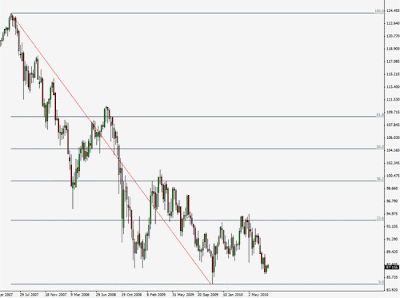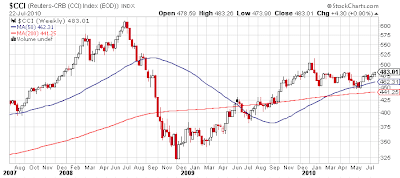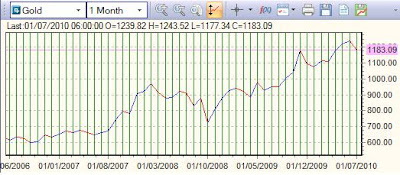- +10% against the U.S. Dollar in one year (+30% in 3yrs)
- +20% against the Euro in one year
- +23% against the British pound in one year
- +10% against the Swiss franc in one month
USD/JPY +10% against the U.S. Dollar in one year (+30% in 3yrs)
EUR/JPY +20% against the Euro in one year
Hedge funds invested more than $5.5 billion dollar in the yen with a long position.
Even the central banks are investing in the Japanese currency!
Some years ago central banks were trying to reduce their exposure to the ¥en, but today they changed their strategy...
In the first three months of the year China invested $6 billion in Japanese government bonds, leaving at the same time the US bonds. In May this investment reached $7.9 billion!
But Japan has:
- a sovereign debt of 200% of the GDP
- a budget deficit of 10%
- low interest rates near 0.1%...
So why this ¥en euphoria?
Japan's economy still better than the US and Europe economy.
Japan will take advatage of its geographical situation in the Asian zone and its economy will benefit from China and India economic growth.
The Japanese ¥en is a safe-haven currency.
When the level of volatility is very high, and US T-bonds interest rates decrease, the ¥en demand increase. Traders close their carry trade positions, pay back yen-denominated loans by selling stocks and other instruments and converting their USD and other currencies back into JPY (the JPY pairs get hit hard because of all the yen buying).
So the yen benefit from the Europe sovereign debt crisis and from the fear of W scenarios.
We all know that the U.S. needs international investors to finance their economy (gov bonds buyers).
If China doesn't invest anymore the dollar will fall and interest rates will skyrocket.
But Japan doesn't have this problem and can finance its economy with the households and firms savings (domestic savings).
With a strong economic growth rate due to commodities exports the Australian dollar (AUD) and the Canadian dollar (CAD) can be serious competitors to the ¥en. However the ¥en has a competitive advantage, it's with the US dollar the most liquid market in the world.
From my point of view the ¥en should continue to increase.
It's not sure that the BoJ (central Bank of Japan) will succeed to regulate the yen (negative impact, export...).
And finally, except the dollar, there is no real alternative to the investors but the yen.
USD/JPY can soon break the 85 support and open a downtrend to the next support 80.










